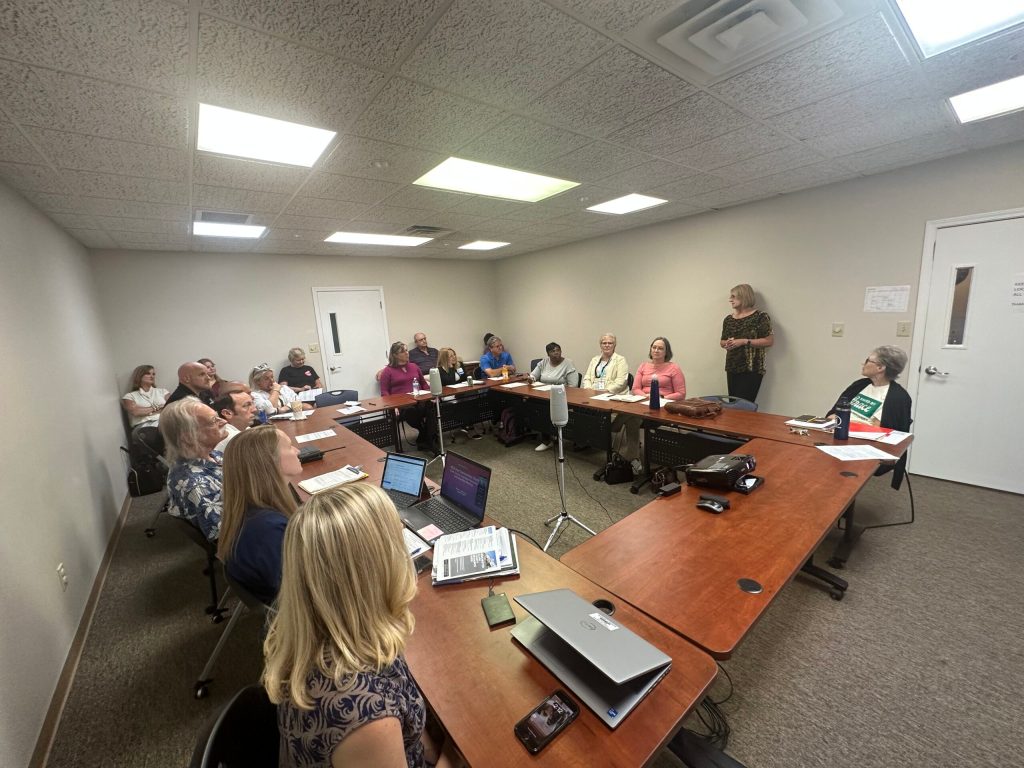Clark County ASAP hosts expert to talk about Kentucky HEALing Communities Study
Published 3:15 pm Thursday, September 19, 2024
|
Getting your Trinity Audio player ready...
|
The Clark County Agency for Substance Abuse Policy (ASAP) continually seeks to provide aid for those in need.
Earlier this year, its Overdose Prevention Committee met with a highly qualified professional to better understand how to do so.
Dr. Sharon Walsh, Director of the University of Kentucky’s Center on Drug and Alcohol Research, spoke to the Committee.
She is also the Principal Investigator for the Kentucky HEALing Communities Study, which, according to https://healingstudy.uky.edu, “invites you to assist in reducing opioid overdose deaths through the Helping to End Addiction Long-term (HEAL) initiative.”
“My work [has] really [been] focused on opioids for a long time, and the HEALing Communities Study was a very unprecedented opportunity that was presented to us,” said Dr. Walsh. “The reason for this really was that the opioid epidemic was out of control.”
Utilizing an approximately $350 million research grant, the HEALing Communities Study featured researchers from multiple states working to develop information and resources that could help “guide community leaders, policymakers, health care workers, family members and people who use drugs to find solutions to reduce opioid overdose deaths. The study translated research results into actionable steps in 67 communities across the four states.”
As expected, a variety of statistical details—some of which are still being updated—were provided.
Yet one goal remains the same: to reduce opioid overdose deaths by 40 percent.
Specific to the commonwealth, the Kentucky HCS counties had a total of 764 opioid-overdose deaths in 2017, with an average rate of 45.7 opioid-related overdose deaths per 100,000 in an area where 44 percent of Kentucky HCS counties are rural.
The served area encompasses over 1.8 million individuals.
Three intervention components were used: community engagement, communication campaign, and an opioid-overdose reduction continuum of care approach (ORCCA).
Over time, intervention steps have progressed from preparation to implementation and monitoring.
Specific to Clark County, partners in various steps – including naloxone distribution – have included SPARK Ministries, Bluegrass Care Navigators, and Rapha Ministries. Mountain Comprehensive Care Center, Clark County Health Department, Clark County Detention Center, Achieving Recovery Together, Clark County Home Incarceration, and more.
Results from the ongoing study – which is ongoing and in many ways confident – thus far have been largely positive, though there’s always room for growth.
Certain adjustments have been made in the statistical model over the course of the study to reflect meaningful differences, such as urban vs. rural populations.
During an intervention period, Clark County proudly saw a 55 percent decrease in opioid overdose deaths.
Among other key findings, the study has discovered that – through its actions and implementations – an estimated 8 percent reduction in all overdose deaths is evident, along with a significant 37 percent reduction in overdoses involving opioids and psychostimulants.
Dr. Walsh noted that Clark County’s efforts to curb opioid overdoses continue to be strong.
“When we started out…some of our counties were really behind,” she said. “Clark County was already doing quite a bit.”






